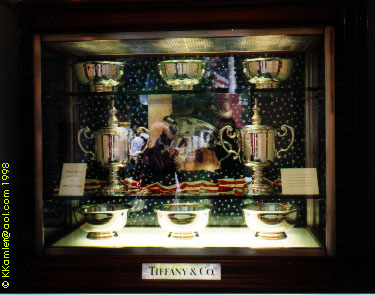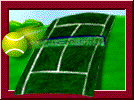|









| |

"
To see Good Tennis! What divine joy
Can fill our leisure, or our minds employ?
Let other people play at other things;
The King of Games is still the Game of Kings
"
from Parker's Piece by J.K.Stephen
|
|
|
The
game of tennis is the same everywhere. The name given to the game differs in
different countries. In Great Britain it is called Tennis or, to distinguish
it from Lawn Tennis, Real Tennis or Royal Tennis. In the USA it is called
Court Tennis: in France Jeu de Paume (hand ball): and in Australia Royal
Tennis. The various names throw light on the development of the game. Tennis
originated in France before the 12th century. The whole appearance of a tennis
court is influenced by its origins. The first courts were to be found in
courtyards immediately adjacent to a castle or in cloistered monastery
quadrangles. Originally the players played with their hands (jeu de paume).
Later they used gloves, then short bats to hit the ball. The game became very
popular and in the 13th century it is said that there were as many as 1,800
courts in France.
In Great Britain, as in France, royal patronage ensured the continued
popularity of the game. French Kings in the 16th century and Stuart Kings in
the 17th century were enthusiastic players. George IV (1763-1830), Prince
Albert (1819-1861) - there is a locker in the changing room at Hampton Court
Palace which still bears his name - Edward VII (1842-1910) and George V
(1866-1936) have all supported the game.
Lawn Tennis, which derived from Real Tennis in about 1874, is played on a
marked-out surface without side or end walls. Court Tennis, to use the
American name for Tennis, indicates that Tennis is played in a specially court
with walls on four sides.
 No two tennis courts are exactly alike. One court can be marginally
wider than others. Other differences occur in the width or angle of the
penthouse roof above the corridor and in the width of the tambour.
No two tennis courts are exactly alike. One court can be marginally
wider than others. Other differences occur in the width or angle of the
penthouse roof above the corridor and in the width of the tambour.
Today the number of courts has dwindled. There are 17 courts in use in Great
Britain; 7 in the USA; 2 in France; and 3 in Australia. There are not more
than a few thousand players in the world; but they make up in keeness for any
lack of numbers. There are amateur, professional open and world competitions.
|
|
|
